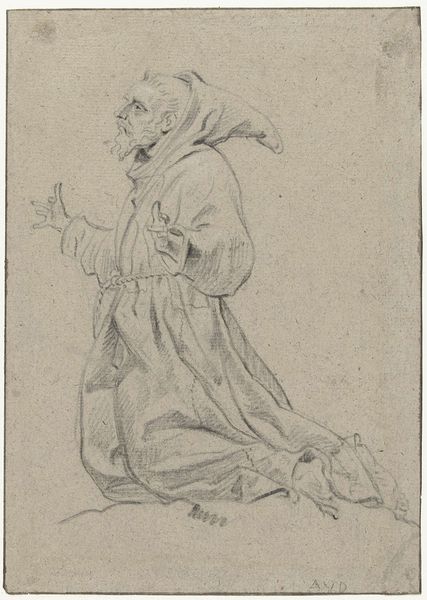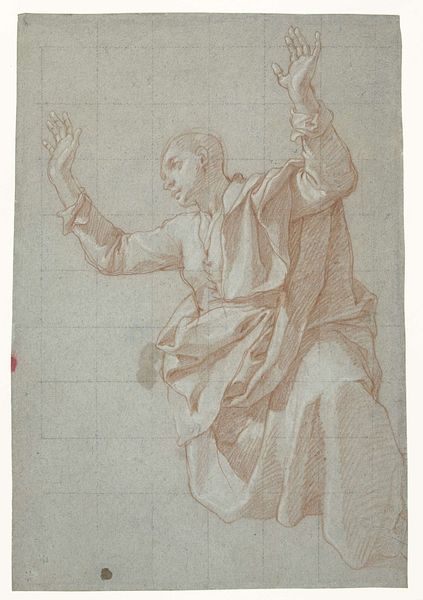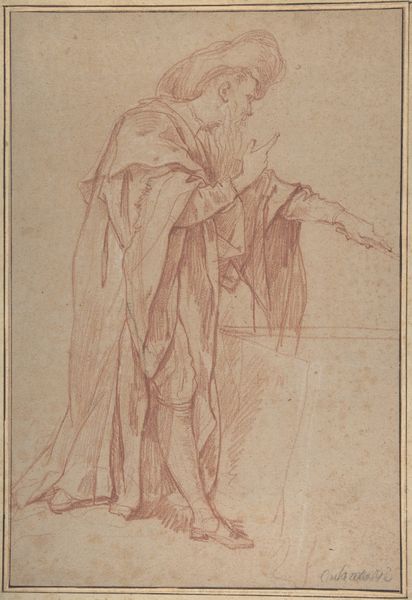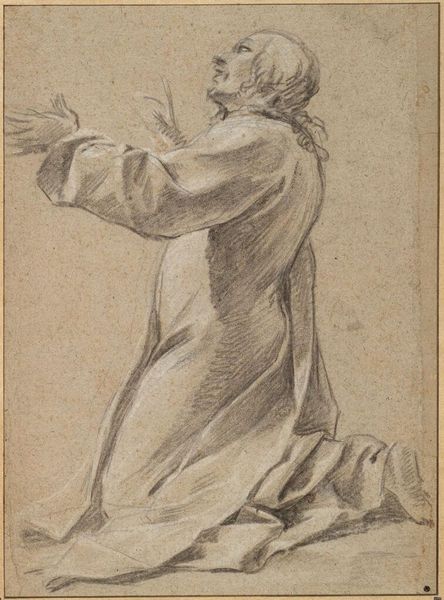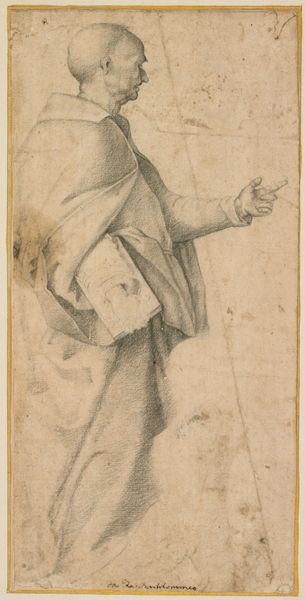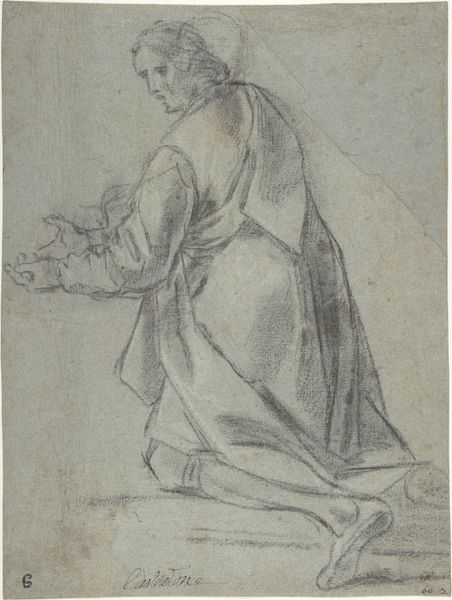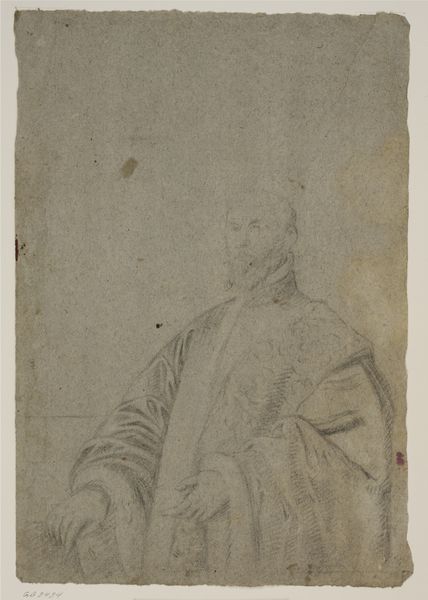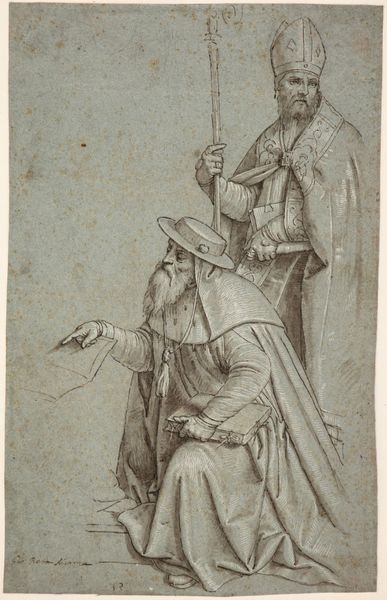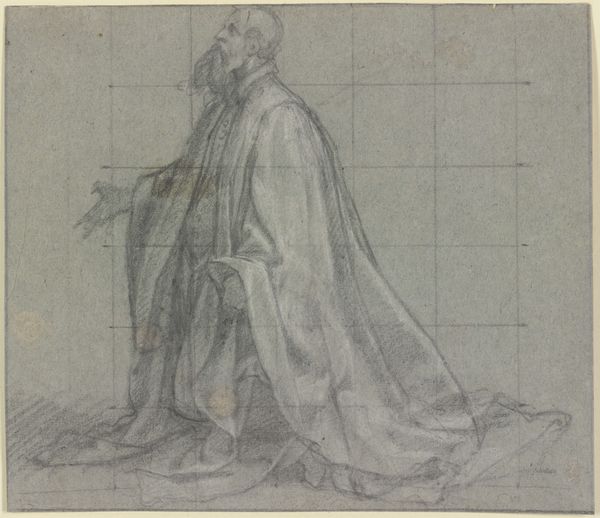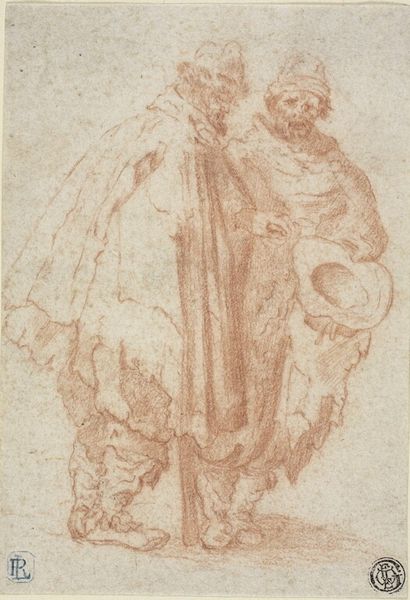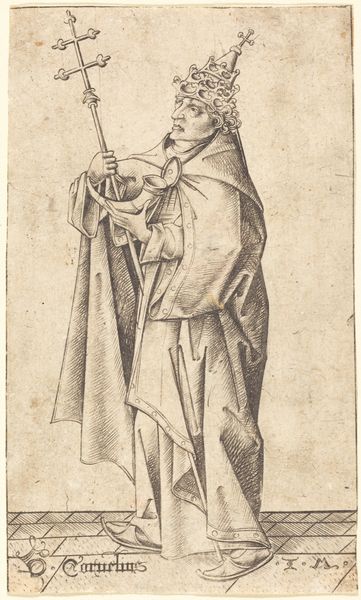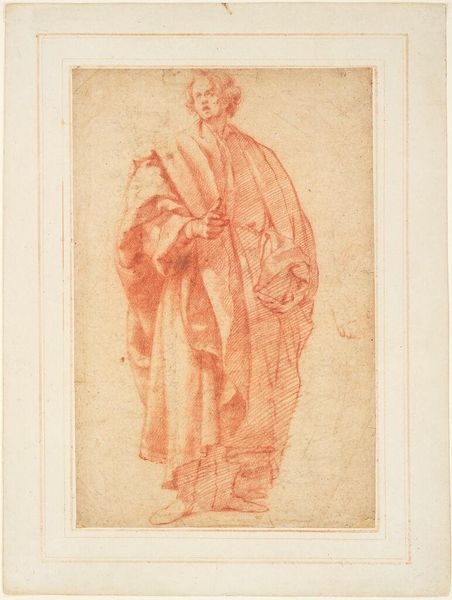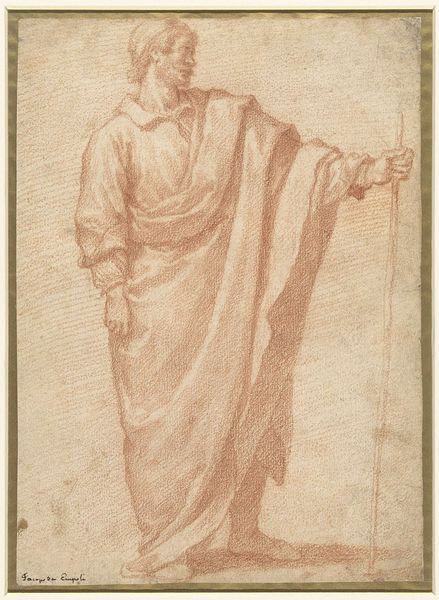
drawing, pen, charcoal
#
portrait
#
drawing
#
baroque
#
charcoal drawing
#
figuration
#
pen
#
portrait drawing
#
charcoal
#
history-painting
#
watercolor
Dimensions: height 328 mm, width 247 mm
Copyright: Rijks Museum: Open Domain
Curator: Let's take a look at this 17th-century drawing titled "De heilige Ignatius van Loyola, in aanbidding," attributed to Giovanni Battista del Cairo. Editor: It's quite striking. The way the red chalk and pen captures the saint in this devotional pose—kneeling, hands outstretched, gazing upwards—it's almost theatrical, like a stage play frozen in time. Curator: Indeed. Del Cairo was working in a milieu profoundly shaped by the Counter-Reformation. Ignatius, as founder of the Jesuit order, became a powerful symbol of Catholic renewal. The work’s public role, then, was to inspire piety. Editor: You can really see that push towards devotion in the meticulous detail given to his garments, contrasted with a more minimal approach to the background. All our attention is focused on the materiality of his robes, that heavy fabric…I wonder about the workshop where this piece was produced and what that looked like at the time. Curator: Workshops like del Cairo’s often had multiple hands involved, assistants and apprentices each playing a specific role. And the source of the materials would be just as critical; sourcing paper, charcoal, pen and ensuring their quality for presentation in noble households would need significant organisation. Editor: Exactly! And thinking about consumption, these pieces were, in effect, objects of spiritual aspiration for wealthy patrons. Someone commissioned this drawing, someone paid for it, and the intent was to then consume that representation for personal reflection. Curator: Absolutely. The history-painting element is crucial here; representing historical or quasi-historical religious figures reinforced the lineage and legitimacy the Catholic Church sought. These images were meant to instruct, to edify, and ultimately, to maintain social order. Editor: But, just looking at it again...the charcoal, the watercolor... you know it would be easy to forget the sheer human labor that goes into its creation, the grinding and mixing of pigments, the precise control needed to build those subtle gradations of light and shadow with such simple tools. Curator: A crucial point. Thank you for illuminating these less visible dimensions. It allows us to look beyond just the represented history. Editor: My pleasure! It all serves to enrich our appreciation, don’t you think?
Comments
No comments
Be the first to comment and join the conversation on the ultimate creative platform.
